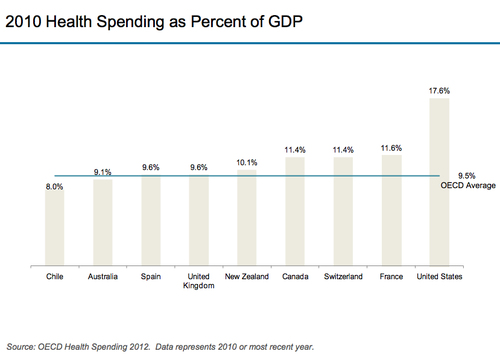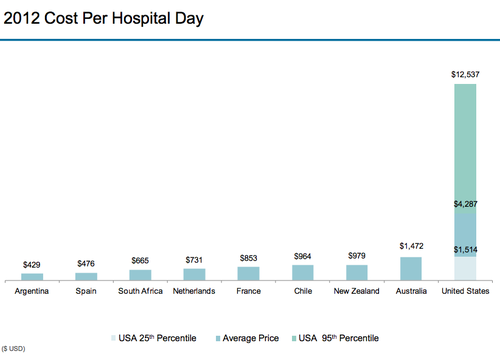OUR HEALTHCARE SYSTEM—AN AMERICAN HORRROR STORY IN COST TERMS
AND NOT SO GOOD WHEN IT COMES TO QUALITY
It is nothing new to say we have an extraordinarily expensive system which not only fails to cover something like 40 million Americans, but also has severe quality problems. At its best, it is the best—which is wonderful (if you can afford it). For most people it does not show up too well compared to other developed nations. When it comes to longevity, we do not fare well—and we tend to be sicker that the populations of other nations as we age. In short, not only do Americans have shorter lives, but the quality of those lives is not what it might be.
Why is this? Healthcare deficiencies are not the only cause—lifestyle choices, the poor quality of our food, and environmental pollution are factors—but healthcare is still a serious cause for concern.
We know all this—it is certainly publicized well enough—and yet we seem incapable of doing anything about it. As with so many other issues, the richest nation in the world—famous for its “can do” attitude—seems caught in the greed of vested interests.
Recently I ran across some graphics which ram home just how out of line we are. In cost terms alone, it is a horror story.
What is particularly striking is just how out of line U.S. costs are. The differences are so extreme—even compared to high cost European countries like Switzerland—that it is hard not to suppress the feeling that something is very wrong; that greed, both corporate and personal, has got completely out of hand.
By the way, these graphs come from a commendable site called Priceonomics.com There are many more graphs on the Priceeconomics site and they make chilling reading.



Coincidentally, an excellent article by Jeffrey Pfeffer appeared in the Business Week of May 10 2013. He places the blame on the administrative costs imposed by insurance companies. I doubt that he is entirely right--there are other culprits ranging from over-priced drugs to for-profit hospitals—but he is certainly partially right.
The following is an extract from his article.
More than 20 years ago, two Harvard professors published an article in the prestigious New England Journal of Medicine showing that health-care administration cost somewhere between 19 percent and 24 percent of total spending on health care and that this administrative burden helped explain why health care costs so much in the U.S. compared, for instance, with Canada or the United Kingdom. An update of that analysis more than a decade later, after the diffusion of managed care and the widespread adoption of computerization, found that administration constituted some 30 percent of U.S. health-care costs and that the share of the health-care labor force comprising administrative (as opposed to care delivery) workers had grown 50 percent to constitute more than one of every four health-sector employees.
Pfeffer is the Thomas D. Dee II Professor of Organizational Behavior at Stanford University's Graduate School of Business, where he has taught since 1979. He is the author or co-author of 13 books, including his latest, Power: Why Some People Have It—and Others Don't (HarperCollins, 2010).
No comments:
Post a Comment